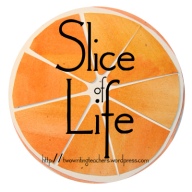Our third grade classes have a project we do every year at Thanksgiving. We call it our Molly doll project because it starts with a reading of Molly’s Pilgrim by Barbara Cohen and ends with the creation of a doll (get it, we go from Molly to doll!) Anyway, we teach and discuss Molly’s story, the story of a young Jewish immigrant who is experiencing prejudice, unkindness, and bullying. Then we focus on the varied cultures represented by each of our unique backgrounds and generate a desire to learn more. Finally, the children go home and interview family members to learn about their family heritage and create a doll to present to their classmates.
This year is somewhere around the 21st year since my third grade colleagues and I first introduced this project. I marvel at the variety of cultures my students represent. When first introduced my students’ families came, for the most part, from Europe. Children with families from China arrived next followed by India. Some families couldn’t identify a country of origin. If your ancestors were forcibly brought to the continent as slaves how would you know what country your ancestors called home? Some of our families can identify an African country as the home of their ancestors and relay the story of their immigration but for many the story doesn’t go back that far. In the last five to maybe seven years countries in South and Central America have gained significant representation and the most recent entries have come from the Middle East.
So where I once taught the offspring of white Europeans, I now find myself entranced by the offspring from five continents (I haven’t taught anyone from Australia yet) and innumerable countries. They represent many languages, religions, traditions, and cultures. They bring stories and experiences to our classroom that they don’t even realize are special. And their dolls, their presentations, oh, we just love to learn about each other’s cultures! We learn about traditions and favorite foods. We learn about languages, religions, and homelands. We learn about hard times and a desire to be in a place that offers the promise of more…America!
They have become One World. Our students simply accept it. They aren’t surprised that Sylvana doesn’t celebrate Halloween or Natalie doesn’t celebrate Christmas. They accept Jasveet’s long hair, understanding that in her culture one doesn’t cut one’s hair. They learn the ideas behind vegetarianism from one and ask about red dots seen on foreheads of another. They recognize the food brought in for lunch because they visit restaurants serving that food from other places. And they enjoy trying food from other places. They live in a town where they share their space with the whole world, creating the idea of one world. They are the future so let’s cross our fingers and wish upon a star for these kids and where they might take us!


These distinct examples speak volumes- “They aren’t surprised that Sylvana doesn’t celebrate Halloween or Natalie doesn’t celebrate Christmas. They accept Jasveet’s long hair, understanding that in her culture one doesn’t cut one’s hair. They learn the ideas behind vegetarianism from one and ask about red dots seen on foreheads of another. ” A beautiful post about hope, our children, and the future.
LikeLiked by 1 person
Right on! When we started teaching, our town was completely lacking in cultural diversity and now look at us! We are a wonderful, successful, and thriving mix of many cultures of the world and expanding on that daily. Your classroom and your slice are such good examples of how the children first, bring a sensible sense of normalcy to changes that might be threatening or unfamiliar to us older folks. Thank you for a slice about what is good right now.
Perfect timing.
LikeLiked by 1 person
I love your multicultural classroom and how it has altered over the years. It’s so good to hear how accepting the kids are of each other and their cultures. Let’s hope they continue to blend and share and enjoy each other.
LikeLiked by 1 person
I too teach in a diverse multicultural classroom. I love it!
LikeLiked by 1 person
I love this. What beautiful lessons these kids are not only learning but living. Thanks to your trusted environment ♥️
LikeLiked by 1 person